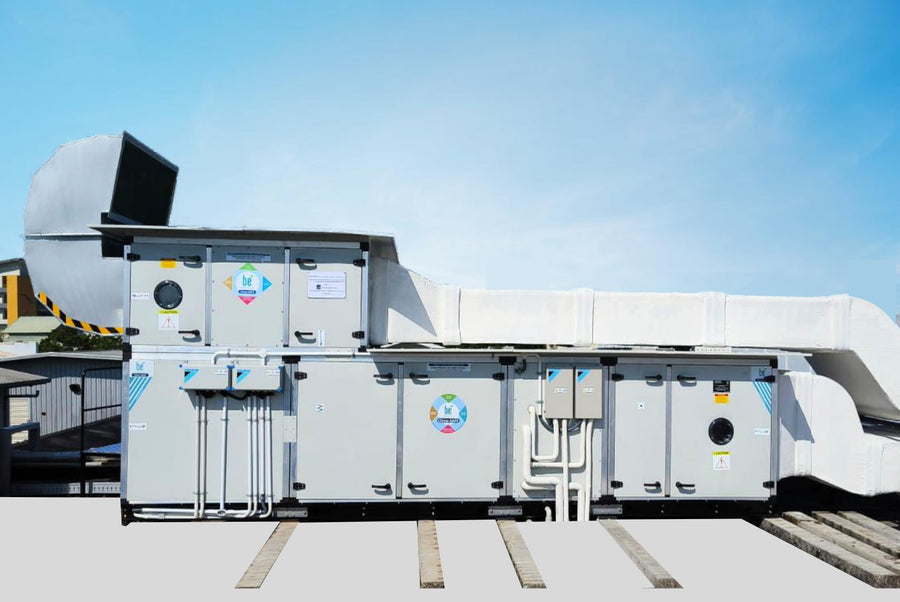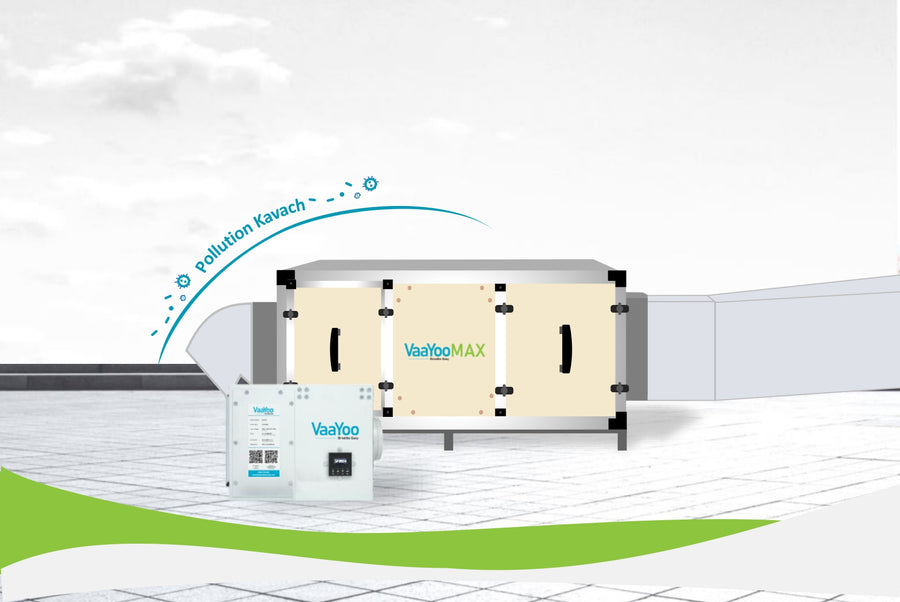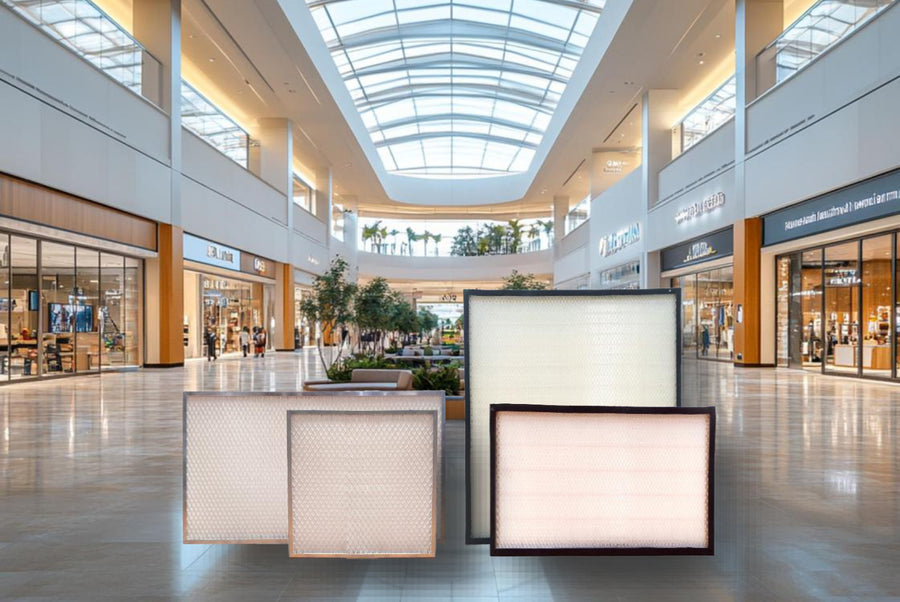IMPORTANCE OF VENTILATION & FILTRATION IN A COVID WORLD

By Barun Aggarwal, CEO, BreatheEasy and ISHRAE COVID-19 Taskforce member
We have gone from being sure that COVID-19 particles are only in droplets and hence 6 feet distance, washing hands and wearing a mask are the only important things one can do to a complete opposite guidance from the WHO on COVID-19 being airborne and aerosolised and hence ventilation and filtration playing a vital role in reducing risk indoors. Masks still play an important role. But surface transmission and droplets are no longer the primary issues one needs to worry about.
The full history of why the WHO went back and forth on this issue of droplets versus airborne is deep rooted in the science of aerosols and the details of this can be read in a well written article by the Wired magazine – https://www.wired.com/story/the-teeny-tiny-scientific-screwup-that-helped-covid-kill/
So what is an Aerosol? Let us start with the definition:
Aerosol (definition): An aerosol (abbreviation of “aero-solution”) is a suspension of fine solid particles or liquid droplets in air or another gas. Aerosols can be natural or anthropogenic. Examples of natural aerosols are exhaled air when breathing, fog or mist and fine dust.
Examples of anthropogenic aerosols are particulate air pollutants and smoke. In general conversation, aerosol usually refers to an aerosol spray that delivers a consumer product from a can or similar container. Diseases can also spread by means of small droplets in the breath, also called aerosols (or sometimes bioaerosols).[3] The size of these aerosols can be as much as 100 microns.
It is this last part of the definition above that is most worrisome. Just by breathing alone, the tiny “droplets” in our breath are aerosolised and stay suspended in the air in a closed space for hours and sometimes even longer. If these aerosolised particles are infected with the COVID virus from an asymptomatic person or a symptomatic person, and when these are inhaled by another person, it leads to transmission.
Hence, the spread of this virus has been so rampant in homes where one person getting impacted with the virus ends up spreading it to others in the same household as most Indian households do not have the luxury of space to isolate properly. Also, proper systems of creating “negatively pressurised” spaces (explained in detail later) is NOT followed in most instances and hence the aerosolised particles float into the house even when a person isolates when a door opens and closes.
SO WHAT CAN ONE DO?
1. WHAT TO DO TO REDUCE RISK (PREVENTIVE)
a. Ventilation
b. Filtration
2. WHAT TO DO TO MINIMIZE SPREAD IN CASE OF ISOLATION ROOM (COVID FACILITY OR FAMILY MEMBER ISOLATING AT HOME)
a. Create negative pressure room for infected person
b. Filtration
Let us understand and go through each one of the three actionable steps above.
1. VENTILATION:
Ventilation is the process of “changing” or replacing air in any space to provide high indoor air quality. The process of changing and replacing the air in a room that may have aerosols of a COVID positive person helps in DILUTING the viral load in the air as the aerosols get diluted with new air coming in and replacing the old air. The old air basically just goes out of the room and risk of transmission is reduced. One can ventilate by keeping windows and doors open, or have a “forced air” ventilation system that brings in air from the outside forcefully with a mechanical fan. A cooler or blower pulling outdoor air is a good example.
2. FILTRATION
The rate of change in the air with ventilation can be somewhat slow – sometimes 2-3, air changes in one hour and sometimes upto 8-10 air changes per hour. In order to supplement the ventilation to further minimize the risk, indoor recirculation filtration should be used. This filtration should have certified H12/H13 grade HEPA filters that will ensure that any COVID particles that may be in the air in aerosolised form are also captured by the filters as it continuously moves the air within the space in and out of the machines, blocking the tiniest particles in the filters. Is it safe to touch and remove filters? (See article here on How to safely change / clean filters during the COVID pandemic)
3. NEGATIVE PRESSURE
A room is in “negative air pressure” when the pressure inside the room is lower than the pressure outside. … The resulting “negative air pressure” means the room prioritizes trying to suck air in rather than pushing it out. Hence, if someone opens the door to a room where a patient is isolating, the air from the rest of the house will “rush into” the room, versus the air from the room “rushing out” to the rest of the house.
One can create a negative air pressure room easily by keeping an exhaust fan in the joining bathroom of the isolation room turned on and keeping the door between the room and the bathroom slightly ajar. Once must take caution to ensure that the point of the outlet of the exhaust air is outdoors and clear and not populated by any people or in any indoor space. As the exhaust fan throws the air out, the volume of air that gets thrown out will get replaced by air entering the room from doors and windows (or from the gaps in the doors and windows).
One can be even more careful by filtering the exhausted air so that it does not cause any damage to anyone outside even by chance. This can be specially important if the exhausted air is let out in an indoor space occupied by people (example – the exhaust air is let out in a corridor area meant for human movement).
The author is the founder and CEO of BreatheEasy Consultants Pvt Ltd. He serves on multiple committees and boards related to IAQ, including the ISHRAE COVID-19 taskforce that developed the HVAC Guidelines for COVID-19. He can be reached on barun@BreatheEasyLabs.com
BreatheEasy Consultants Pvt Ltd (BE) is India’s foremost Indoor Air Quality (IAQ) solutions company having pioneered solutions related to IAQ for homes, offices, schools, malls and hospitals across India and internationally. BE has been working tirelessly to make offices of all sizes safer for occupants since the start of the COVID-19 pandemic.







